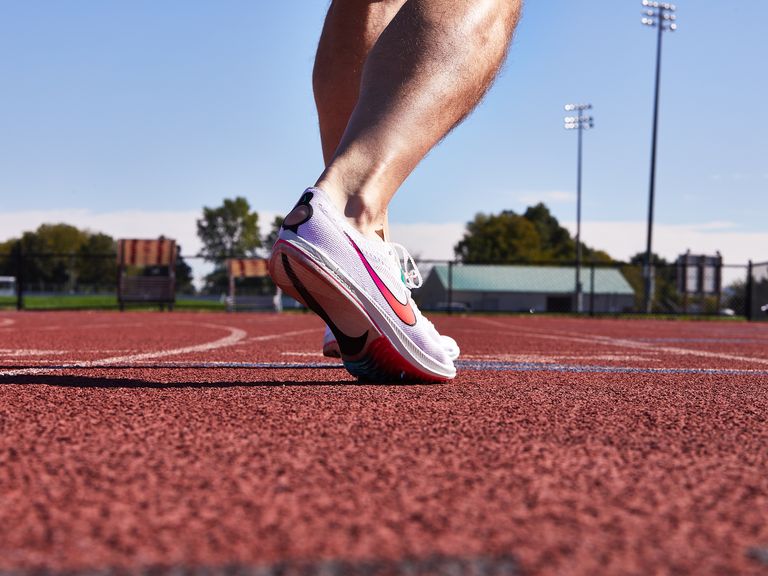
Sprinters should use 1/4 inch pyramid spikes for track shoes. Proper spike size is crucial for sprinters to maintain stability and maximize performance during races.
For sprinters, having the right kind of spikes on their track shoes is essential for achieving optimal performance. One of the key considerations is the size of the spikes. Sprinters should opt for 1/4 inch pyramid spikes for their track shoes.
These spikes provide the necessary stability and traction needed for explosive bursts of speed during sprinting events. Choosing the right size spike ensures that sprinters can dig into the track effectively and maintain their stride without slipping. It is crucial to find a balance between grip and comfort, as spikes that are too long can cause discomfort and hinder performance. By selecting the appropriate size spikes, sprinters can be confident in their ability to sprint with power and precision.
|
Brand |
Model |
Best For |
Price |
|
Nike |
Zoom Rival Sprint Track |
Short Distance |
|
|
MD 500V7 |
Middle Distance |
||
|
Nike |
Zoom Rival |
Long Distance |
Exploring The Importance Of Spike Size
The size of spikes worn by sprinters plays a crucial role in their overall performance. Not only does it affect their speed, but it also impacts their stability and grip on the track. Smaller spikes tend to provide better traction, allowing sprinters to generate more power and propel forward with ease.
|
Serial |
Spikes That You May Need |
|
1 |
|
|
2 |
|
|
3 |
On the other hand, larger spikes may hinder agility and increase the risk of slippage. It is essential for sprinters to find the right balance between traction and speed by selecting the appropriate spike size for their specific needs. Additionally, considering the surface and weather conditions of the track can further influence the best spike size choice.
Ultimately, optimizing spike size can greatly contribute to a sprinter’s success on the track and give them a competitive edge in races.
Finding The Perfect Spike Fit
Finding the perfect spike fit for sprinters involves considering several factors, including track conditions. Each athlete is unique in their technique and preferences, so it’s crucial to analyze different spike lengths. The size of the spikes can have a significant impact on an athlete’s performance.
Sprinters need to strike a balance between stability and traction. Longer spikes provide better traction on softer surfaces, while shorter ones offer improved stability on harder tracks. It’s essential to understand the relationship between spike size and track conditions to optimize performance.
Sprinters must experiment with various lengths to determine the most suitable for their needs. Ultimately, the perfect spike fit will allow sprinters to maximize their speed, agility, and overall performance on the track.
Maximizing Performance With The Right Spike Size

In order to maximize performance, it is essential for sprinters to wear the right spike size. Determining the optimal spike size for individual sprinters is crucial to their success on the track. Using the correct spike size offers numerous benefits, including improved traction and stability, reducing the risk of injuries.
With the perfect spike fit, sprinters can fine-tune their technique, allowing them to achieve faster times and better results. When it comes to selecting spike size, it is important for athletes to consider their foot shape, running style, and personal preferences.
Each sprinter is unique, and finding the right fit will ensure comfort and support. By utilizing the appropriate spike size, sprinters can enhance their performance and reach their full potential. So, whether you’re a professional sprinter or an amateur athlete, choosing the right spike size is paramount to success on the track.
|
Serial |
Relevant Issues You May Need To Know |
|
1 |
|
|
2 |
|
|
3 |
Conclusion: Size Of Spikes for Sprinters
In this blog post, we have explored the importance of selecting the right size spikes for sprinters. Sprinting is a high-intensity sport that demands proper traction to maximize performance and prevent any potential injuries. By understanding the different types of spikes available and the specific requirements of an individual’s running style, athletes can make informed choices about spike length and shape.
The right size spikes can enhance stability, acceleration, and overall speed on the track. It is essential to consider factors such as surface type, weather conditions, and personal preference when deciding on spike size. Ensuring the perfect fit can make all the difference in a sprinter’s performance, giving them the competitive edge they need.
So, whether you’re a professional athlete or a casual runner, take the time to find the right size spikes to optimize your sprinting experience.


